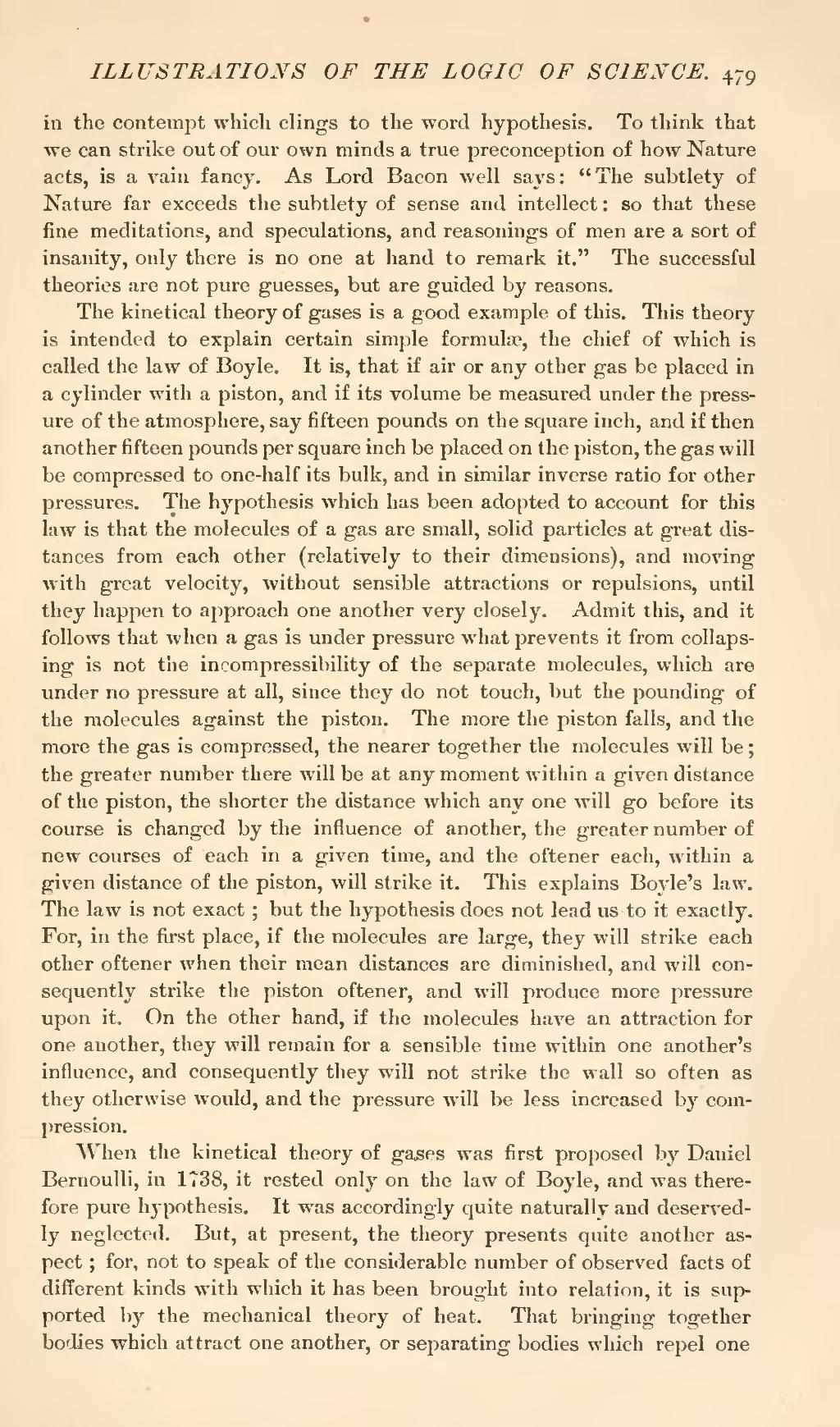in the contempt which clings to the word hypothesis. To think that we can strike out of our own minds a true preconception of how Nature acts, is a vain fancy. As Lord Bacon well says: "The subtlety of Nature far exceeds the subtlety of sense and intellect: so that these fine meditations, and speculations, and reasonings of men are a sort of insanity, only there is no one at hand to remark it." The successful theories are not pure guesses, but are guided by reasons.
The kinetical theory of gases is a good example of this. This theory is intended to explain certain simple formulæ, the chief of which is called the law of Boyle. It is, that if air or any other gas be placed in a cylinder with a piston, and if its volume be measured under the pressure of the atmosphere, say fifteen pounds on the square inch, and if then another fifteen pounds per square inch be placed on the piston, the gas will be compressed to one-half its bulk, and in similar inverse ratio for other pressures. The hypothesis which has been adopted to account for this law is that the molecules of a gas are small, solid particles at great distances from each other (relatively to their dimensions), and moving with great velocity, without sensible attractions or repulsions, until they happen to approach one another very closely. Admit this, and it follows that when a gas is under pressure what prevents it from collapsing is not the incompressibility of the separate molecules, which are under no pressure at all, since they do not touch, but the pounding of the molecules against the piston. The more the piston falls, and the more the gas is compressed, the nearer together the molecules will be; the greater number there will be at any moment within a given distance of the piston, the shorter the distance which any one will go before its course is changed by the influence of another, the greater number of new courses of each in a given time, and the oftener each, within a given distance of the piston, will strike it. This explains Boyle's law. The law is not exact; but the hypothesis does not lead us to it exactly. For, in the first place, if the molecules are large, they will strike each other oftener when their mean distances are diminished, and will consequently strike the piston oftener, and will produce more pressure upon it. On the other hand, if the molecules have an attraction for one another, they will remain for a sensible time within one another's influence, and consequently they will not strike the wall so often as they otherwise would, and the pressure will be less increased by compression.
When the kinetical theory of gases was first proposed by Daniel Bernoulli, in 1738, it rested only on the law of Boyle, and was therefore pure hypothesis. It was accordingly quite naturally and deservedly neglected. But, at present, the theory presents quite another aspect; for, not to speak of the considerable number of observed facts of different kinds with which it has been brought into relation, it is supported by the mechanical theory of heat. That bringing together bodies which attract one another, or separating bodies which repel one

